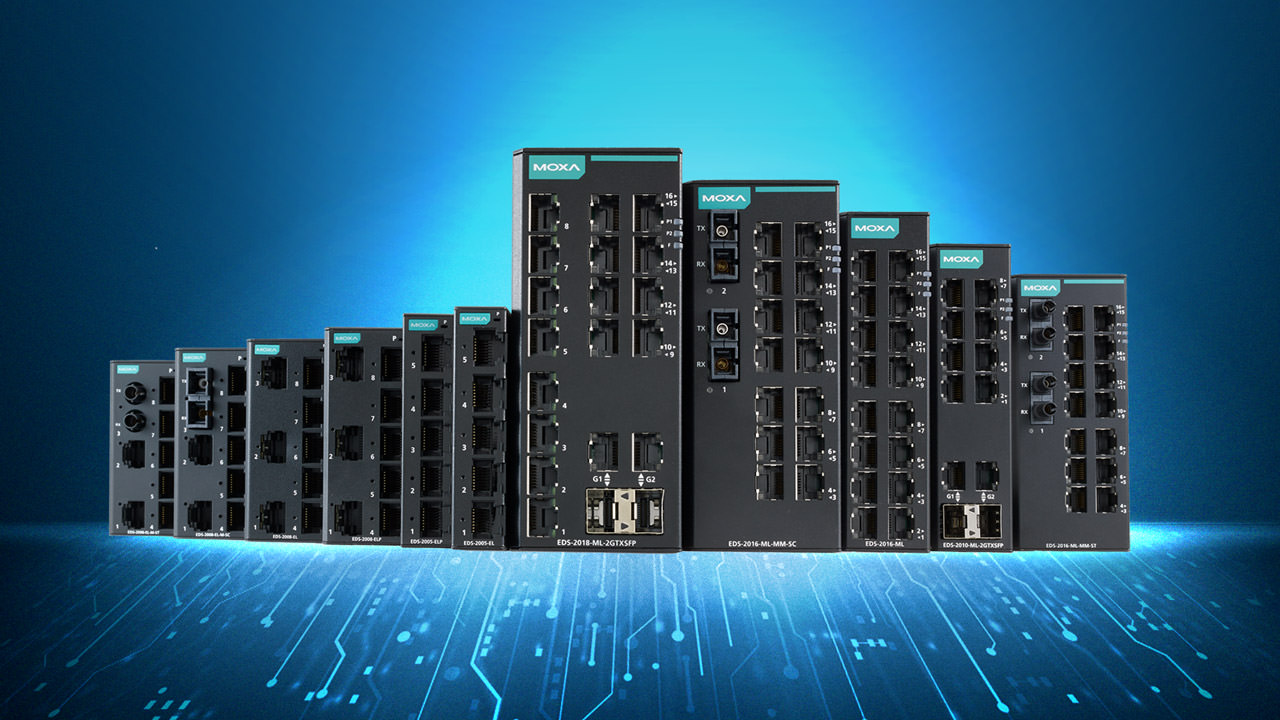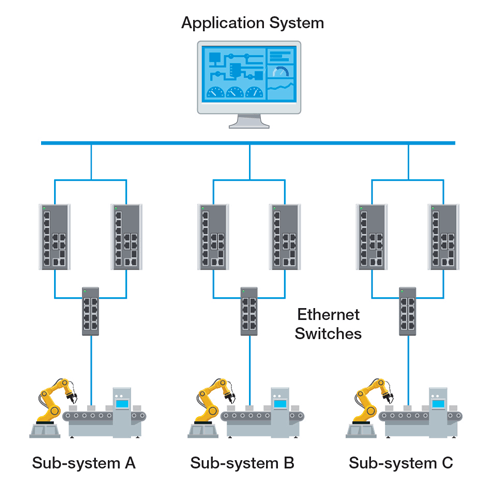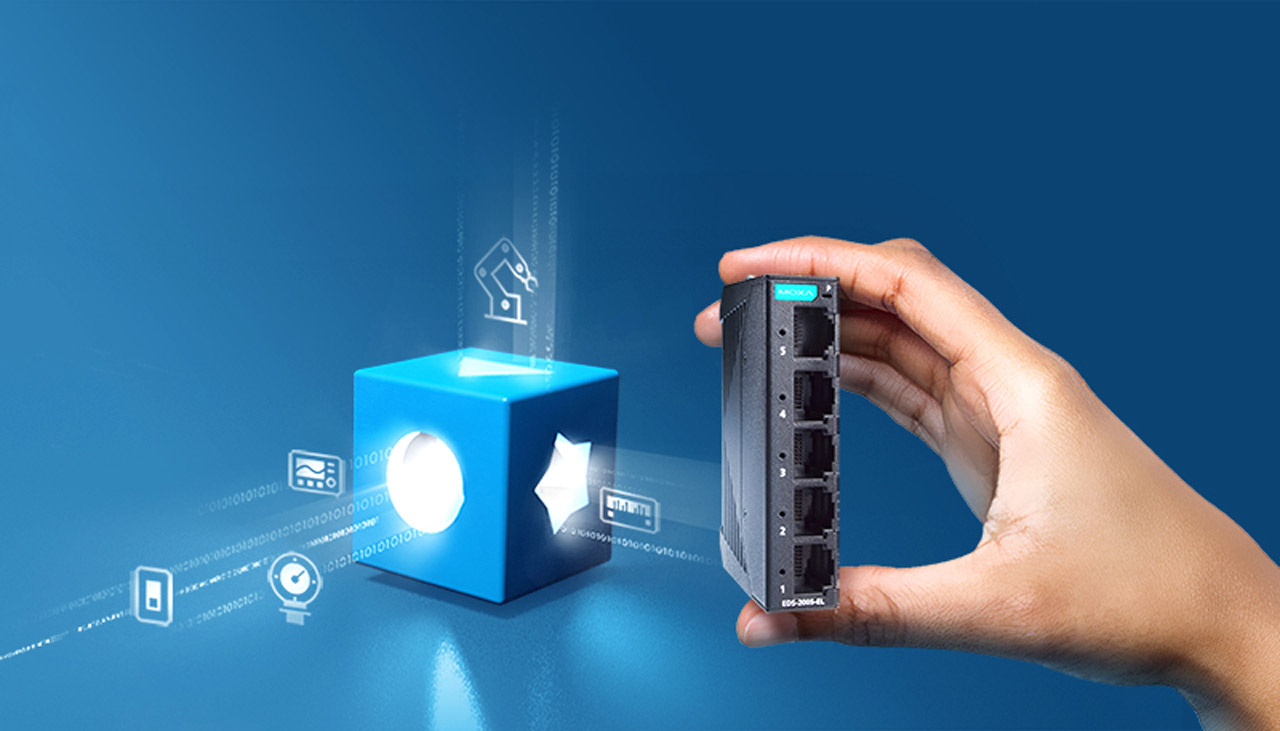TechnologyMay 19, 2024
Selecting unmanaged switches for industrial networks

Choosing a suitable industrial unmanaged switch requires knowledge of your network, the type of devices in the network and the environment in which the switch will be used. A reliable switch can improve network performance, reduce downtime and address security needs.
Ethernet switches are essential components of any network. They are used where additional ethernet ports are needed to connect devices.
When it comes to industrial usage and requirements, selecting the right products is even more critical. Industrial switches are intended to connect devices in harsh weather and environmental conditions. They must ensure a secure and reliable network during operation.
Usually, the customers are familiar with the speed, number, and type of ports that are required to use in their network. For this reason, we do not review these factors.
In this article, we will go over four critical criteria for selecting the right unmanaged switches that can be overlooked.
Reliability and cost of ownership
A reliable connection is a vital part of industrial networking and can justify the higher prices of these devices. It is better to take a long-term perspective when purchasing industrial ethernet switches for your network. These devices will be in place for years and will connect to sensitive equipment. Here are some criteria to select reliable devices that can save costs and bring value to your network.

Plan for expansion: scalable connectivity and high data throughput (lef). Prioritize packets at each node: critical data transmission with Quality of Service (QoS) on unmanaged ethernet switches (right).
Mean Time Between Failures (MTBF): MTBF is a statistical value and is often expressed in hours or years. It indicates the reliability of the device. The cost of downtime in an industrial environment due to equipment failure can be high. Usually, industrial-grade products have higher MTBF than normal products and can operate for many years without any problems. In this case, it is beneficial to select switches from reputable brands with a higher MTBF.
Power supply: Switches with a wide input voltage range can accept power from a variety of sources. This enables them to be used in different environments and saves stocking costs. In addition, during power fluctuations, surges, or drops, the switch can continue working. It increases the uptime and reliability of the network.
If uptime is extremely important in your network, selecting switches with redundant power supplies is better. A redundant power supply allows you to connect the switch to two power sources. It is useful when one source goes down, the other will continue to provide power to the device.
Warranty: The warranty offers assurance of quality. It also gives peace of mind in case a unit is defective. Always review the warranty terms and conditions before purchasing the product from any company. Make sure you can receive enough support when a product fails.
Lead time: The lead time for receiving the switch can easily be neglected. It is an important consideration depending on the project requirements. Delays in time-sensitive projects are costly and can damage the reputation of the responsible person. Carefully evaluate the lead time and select a reliable vendor. This will help you meet your project deadlines.

Space utilization: integrating unmanaged Ethernet switches in compact control cabinets for seamless device and network monitoring.
Durability and conformity
Industrial switches, by design, are more sophisticated than commercial ones and are prepared to resist harsh conditions. Below are some points that you can consider when selecting your device.
Operating temperature range: It is important to consider the temperature range at which the switches are going to be used. The device’s temperature can be very low or very high in certain situations. The operating temperature of the switches should be wide enough to cover potentially extreme conditions.
Industrial grade housing: Choosing a switch with ruggedized housing to endure challenging environmental conditions is vital for an industrial network. The IP code, or ingress protection code, is useful when choosing electrical devices for industrial settings. It can help ensure the protection of the device against the intrusion of objects, dust, or liquids.
It is also worth mentioning, plastic housing switches are good options if you want an affordable and light device. On the other hand, metal housing has better heat dissipation. They also have a better grounding effect when it comes to environments with high electromagnetic noise levels.
Certifications: For certain industries, such as transportation, maritime, railway, etc., additional certification may be required. You can inform yourself of your industry’s mandatory certifications and ensure that the switches you select conform to those standards.
Data transmission

Scaling connectivity: Scaling connectivity: strategies for handling growing device integration in industrial networks.
The performance of a switch can enhance your network’s quality a lot. There are several factors that you can keep in mind before choosing your device.
Broadcast Storm Protection (BSP): A broadcast storm is the accumulation of many broadcast packets in a short period. It can decrease the performance of the network significantly. Finding broadcast storm-affected ports can become very difficult, considering that unmanaged switches are not detectable in network software. Broadcast Storm Protection prevents network troubleshooting by blocking broadcast traffic when it reaches a certain level. This helps to avoid any difficult issues.
Quality of Service (QoS): In a congested network, you want to make sure that the critical packets are transferred on time. The QoS feature prioritizes network traffic so that important packets can pass first. It guarantees essential applications receive the necessary resources to function correctly.
MAC table size: The MAC table is a storage place for the MAC addresses of network devices. This helps the switch to transfer data quickly to the correct ports. When this table is full, the switch broadcasts traffic to all available ports in the network. This can be seen as a security threat. You can prevent this issue by calculating your network’s required MAC table size.
Switch buffer size: The switch buffer is the memory the device uses to store the data frames/packets it receives before forwarding them further. In some environments, having a bigger data buffer inside the switch will improve communications. Subject to intensive data exchange and an overloaded internal buffer, fewer frames will be dropped by the switch. If the switch drops the frame, it must be re-sent again, and it might cause delays in communication. In other words, the bigger buffer size is better.

Adapt to changes: Effective solutions provide network flexibility.
Installation and maintenance
Network installation, because of the large number of available devices, can be complex. There are some considerations in this regard that can save energy and time in installing the switches.
Size of the switch: Control panels or network cabinets are usually loaded with different devices. Fitting switches in control panels sometimes might be challenging or even impossible. In these circumstances, adopting small switches enables flexible installation and can make room for future network expansion.
Ease of installation: Unmanaged switches are plug-and-play, so configuration is simple. The problem arises during mounting many switches in a network cabinet or control panel. By selecting switches with the appropriate mounting kits, you can make sure that they are easy to mount or unmount.
Overall, choosing a suitable industrial unmanaged switch requires knowledge of your network. This includes the type of devices in the network and the environment in which the switch will be used. A reliable switch can improve network performance and reduce downtime. You should also be aware unmanaged switches offer few security features. If security is your priority it is recommended to use managed switches. Considering above mentioned factors will help you to select an efficient unmanaged switch. So before ordering your next switch take your time and evaluate all of them.


